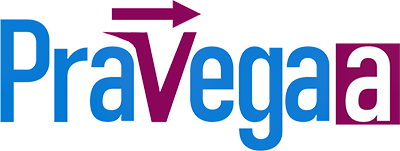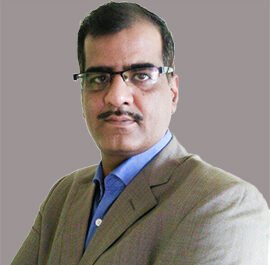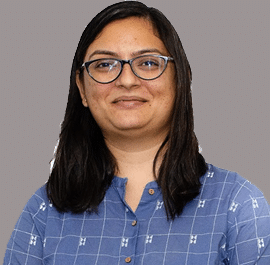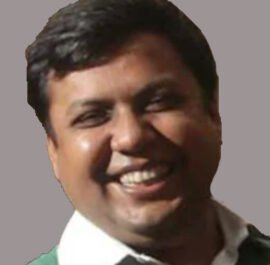Enter your keyword
Our Teacher
Atul Gaurav
Alumni from JNU (School of Physical Sciences) Delhi with Expertise in Classical Mechanics, Quantum Mechanics, Nuclear Physics, and Atomic Physics.
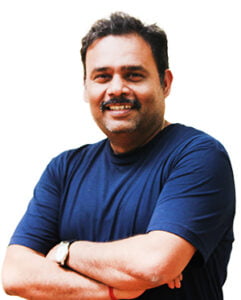 “As the founder and faculty member of the Pravegaa Institute in Delhi, I am dedicated to instructing Classical Mechanics and Quantum Mechanics at both the Graduate and Postgraduate levels with a distinctive teaching philosophy.”
“As the founder and faculty member of the Pravegaa Institute in Delhi, I am dedicated to instructing Classical Mechanics and Quantum Mechanics at both the Graduate and Postgraduate levels with a distinctive teaching philosophy.”
Classical Mechanics:
- Classical mechanics stands as a cornerstone in the realm of Physics, essential and captivating. With over 15 years dedicated to both learning and teaching this intricate subject, I approach it with humility and enthusiasm, driven by the responsibility to nurture young minds in the following ways:1) Conducting qualitative analyses of physical systems, exploring phase space and nonlinear dynamics.
2) Facilitating understanding of various symmetries through Hamiltonian formulation, canonical transformations, and the Poisson bracket.
3) Establishing a foundational understanding of quantum mechanics and statistical mechanics via Hamiltonian formulation, Poisson bracket, and the concept of action-angle.I bridge classical concepts with Lagrangian formulation through the principle of least action, emphasizing the significance of Hamiltonian formulation and its mathematical representations such as the Poisson bracket and canonical transformations.Applying these concepts to problems of small oscillations, central force dynamics, and rigid body dynamics, I aim to provide practical insight and application.Additionally, I delve into the Special Theory of Relativity, navigating discussions on four-dimensional space-time coordinates via Lorentz transformation. Addressing challenges in measuring physical quantities across different inertial frames and exploring concepts like mass-energy equivalence, I enrich the learning experience.Exploring four vectors, Minkowski space, and invariant laws under Lorentz transformation adds depth to understanding, leading to the fundamentals of relativistic electrodynamics and relativistic quantum mechanics.Encouraging two-way communication and multi-faceted problem-solving, I advocate for engagement with previous years’ exam problems and tutorial sheets, supplemented by relevant unsolved problems from reputable textbooks.Throughout my course, I cover a diverse range of topics, ensuring a comprehensive understanding and fostering a passion for classical mechanics.References:a) Classical Mechanics by Herbert Goldstein
b) Mechanics by L.D. Landau and E.M. Lifshitz
c) Nonlinear Dynamics and Chaos by STROGATZ
d) Special Theory of Relativity by Robert Resnick
e) Mechanics by Kleppner and Kolenkow
I empower students to conquer challenges by mastering fundamental concepts and unleashing their creative potential through the application of first principles.
Quantum Mechanics
Delve into the fascinating realm of Quantum Mechanics with me. Inspired by the pioneering insights of David Bohm, Quantum Mechanics unveils a world where classical concepts undergo profound transformation:
1) Classical trajectories give way to the notion of motion described by discrete transitions, challenging our understanding of continuity.
2) Rigid determinism yields to a probabilistic view of causality, reshaping our perception of predictability.
3) The fixed intrinsic nature of elementary particles fades, replaced by the enigmatic wave-particle duality, highlighting the influence of the surrounding environment.
As a lifelong student of Physics, I owe gratitude to Prof. Akhilesh Panday for nurturing my understanding of mathematical physics and Quantum Mechanics during my MSc at JNU. Guided by continuous evolution, I tailor my teaching methods to resonate with the diverse needs of students, drawing inspiration from esteemed educators such as Prof. V. Balakrishnan and Prof. Barton Zwiebach.
Encountering Quantum Mechanics poses unique challenges:
1) Justifying concepts like Wave-particle duality and the Uncertainty Principle requires delving into the microscopic world, often diverging from classical intuition. Through engaging experiments like the photoelectric effect and Young’s double-slit experiment, students bridge the gap between theory and reality, cultivating a deeper understanding.
2) Abstract mathematical formulations, particularly in Dirac notation and Hilbert space, can be daunting. My foremost priority is to equip students with the mathematical tools necessary for clarity, fostering a seamless transition between classical and quantum approaches.
Empowered with mathematical prowess, students embark on a journey through one-dimensional systems, exploring phenomena like the Dirac delta potential and the Harmonic oscillator. Venturing into higher dimensions, we unravel concepts such as space quantization and internal symmetry, culminating in a comprehensive understanding of Quantum Mechanics.
In closing, we explore advanced topics including perturbation theory and WKB approximation, embracing the profound interconnectedness between Quantum Mechanics and Relativity.
Grateful for the simplicity afforded by divine inspiration and mathematics, I navigate the complexities of Quantum Mechanics, echoing Feynman’s sentiment: “Nobody understands quantum mechanics.”
Join me in this captivating exploration of Quantum Mechanics, where curiosity knows no bounds.
References:
a) Quantum Mechanics by Claude Cohen-Tannoudji
b) Quantum Mechanics by R. Shankar
c) Quantum Mechanics by D. J. Griffiths
d) Quantum Mechanics: Concepts and Applications by Nouredine Zettili
e) Modern Physics by Arthur and Beiser
For more insights into my teaching and expertise, subscribe to our YouTube channel: Pravegaa Education.
OUR INSTRUCTORS
MEET OUR PROFESSIONAL INSTRUCTORS



